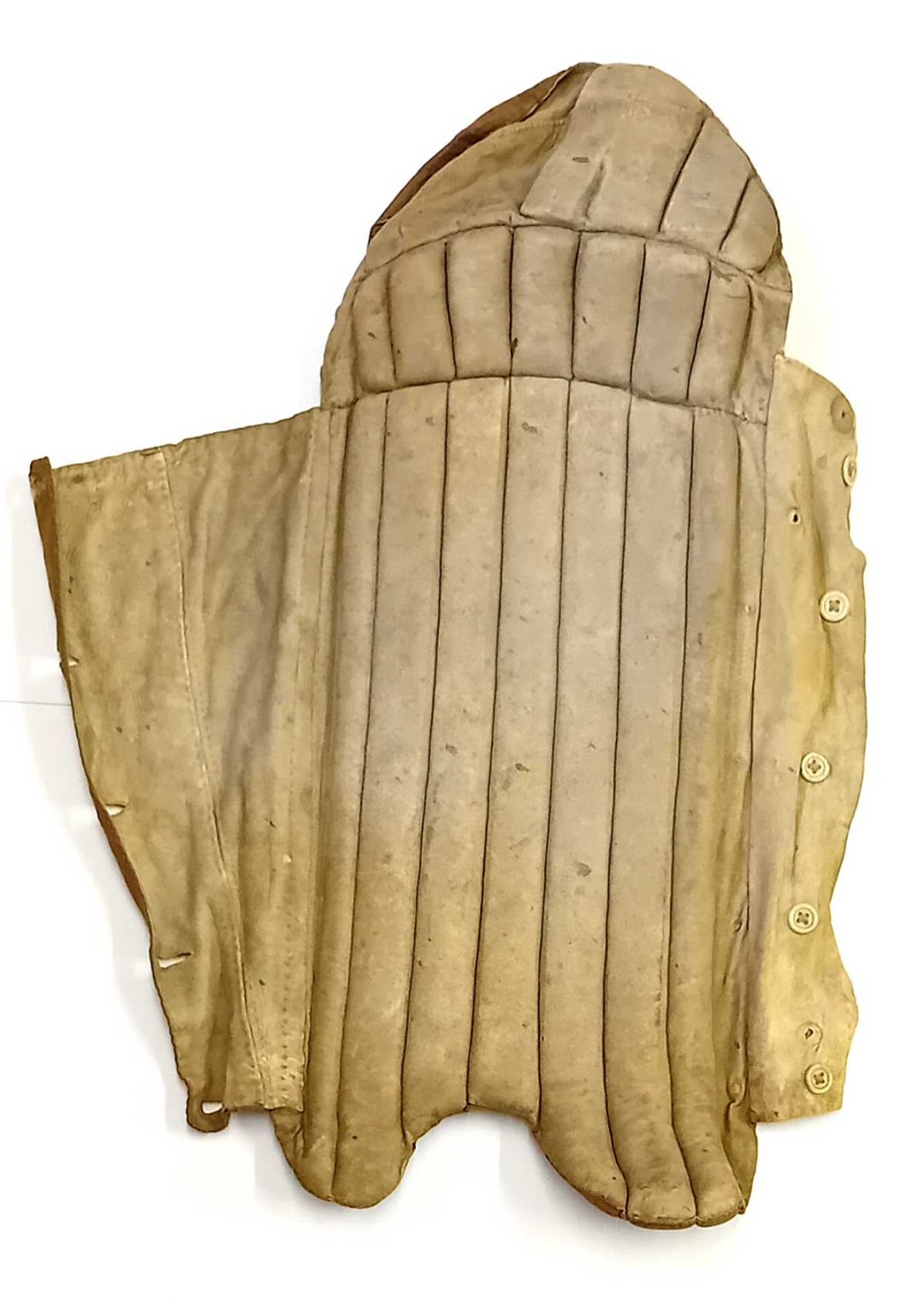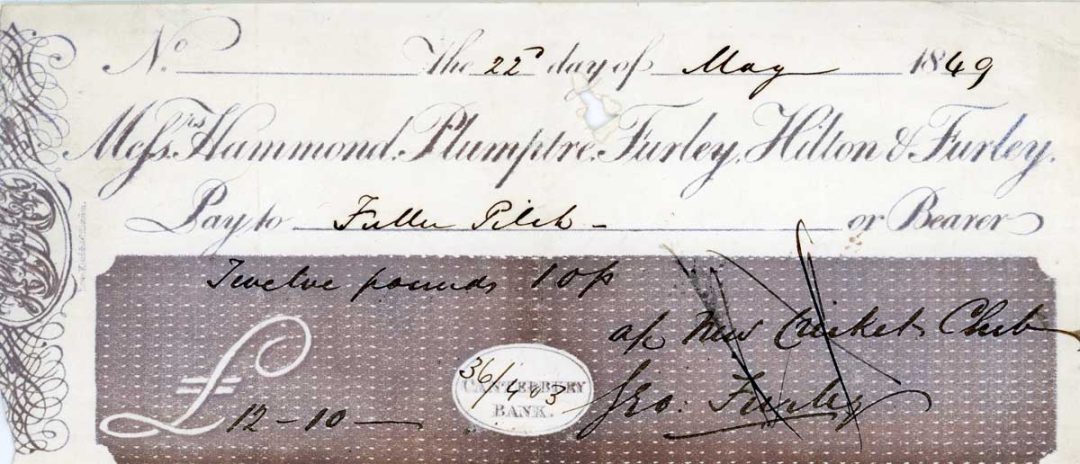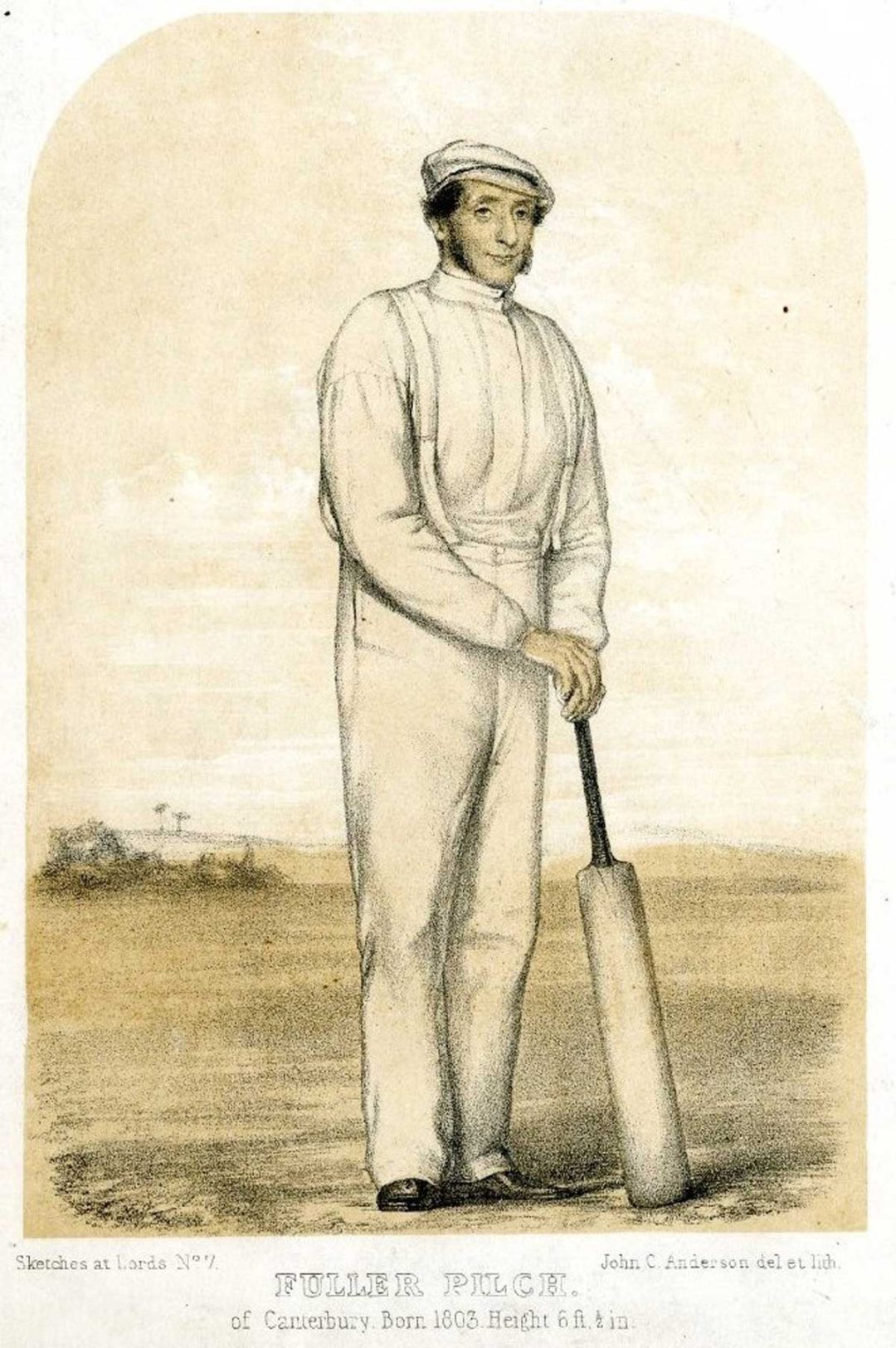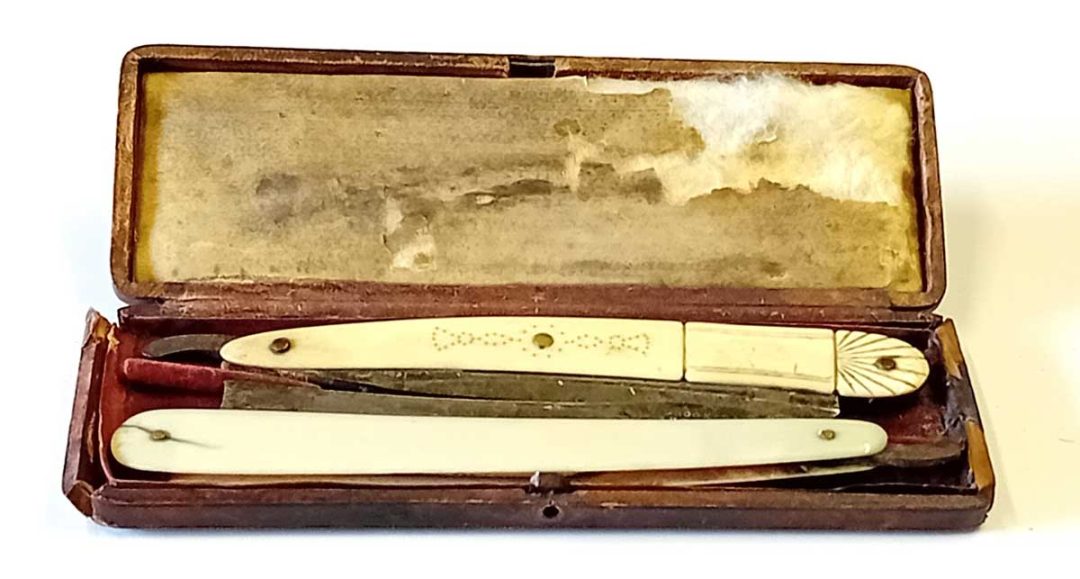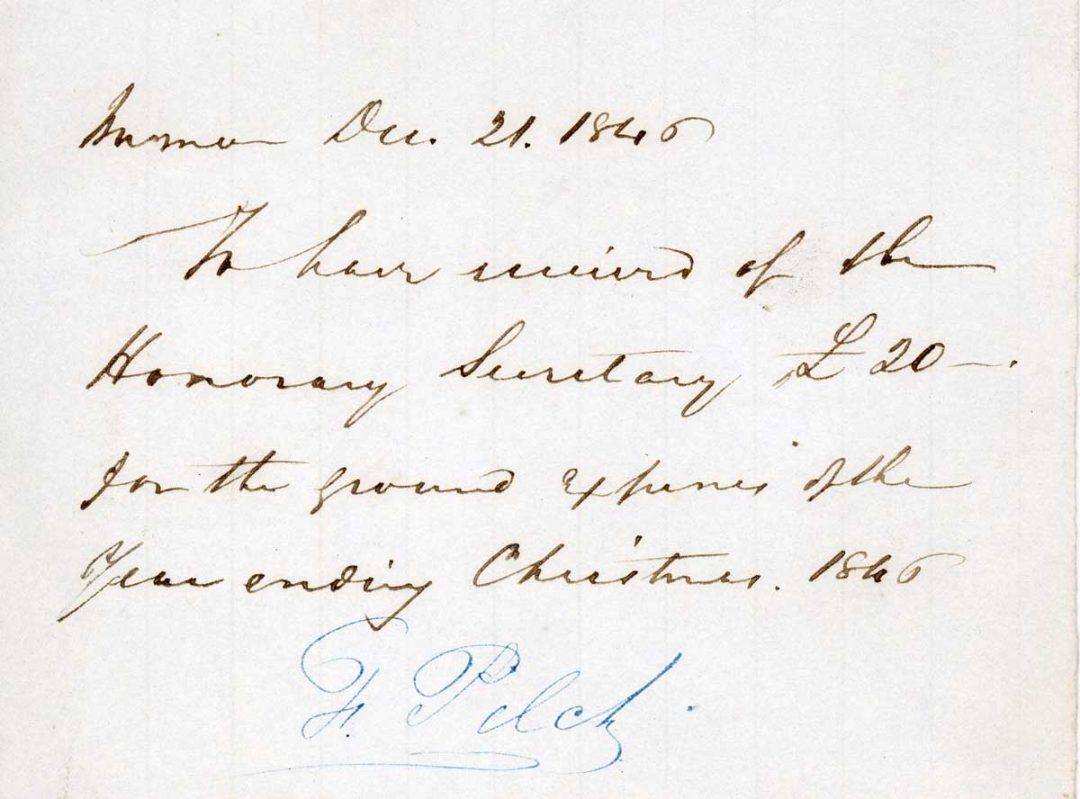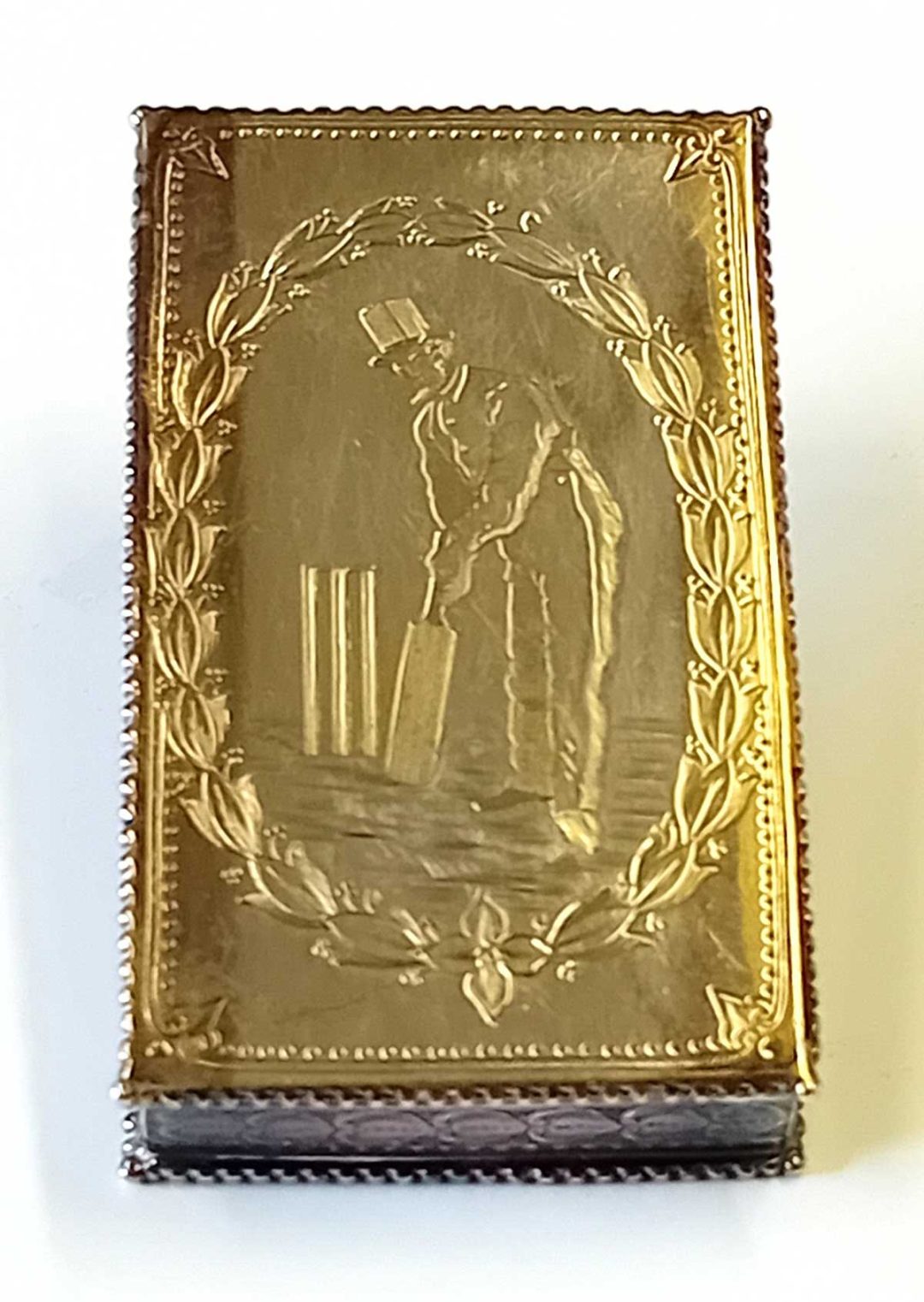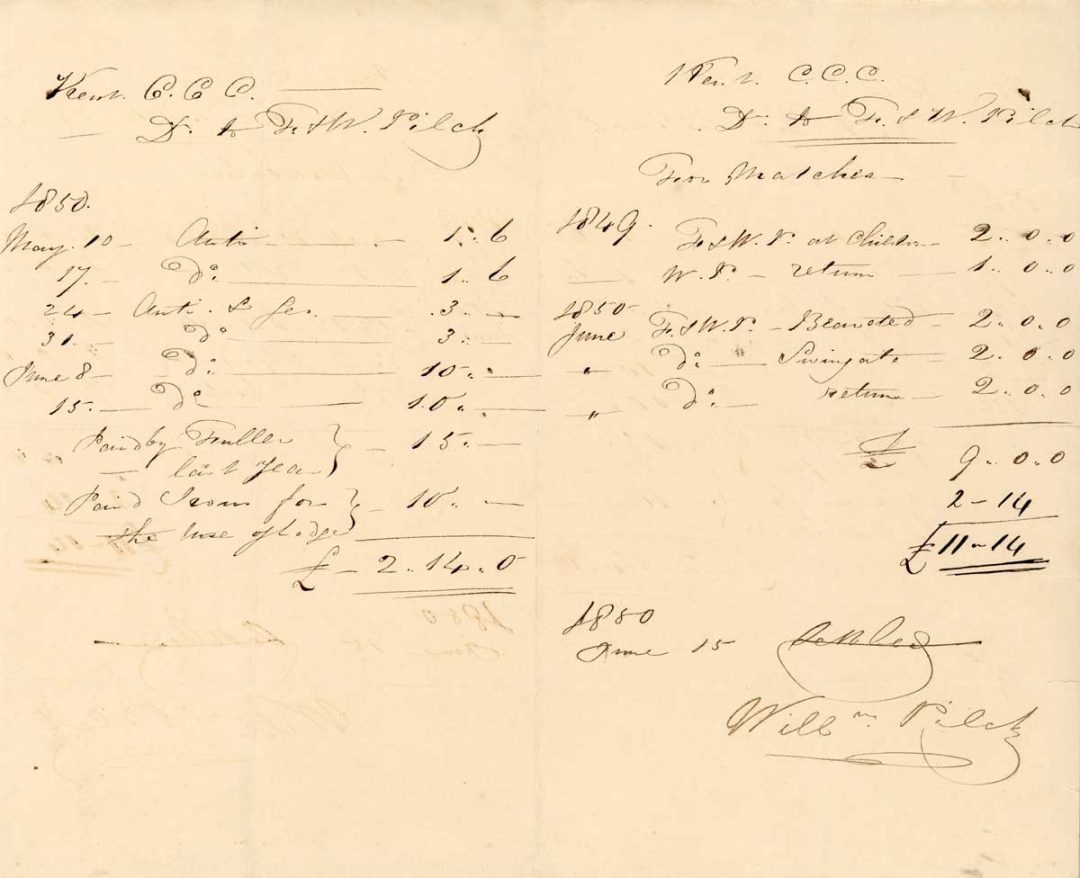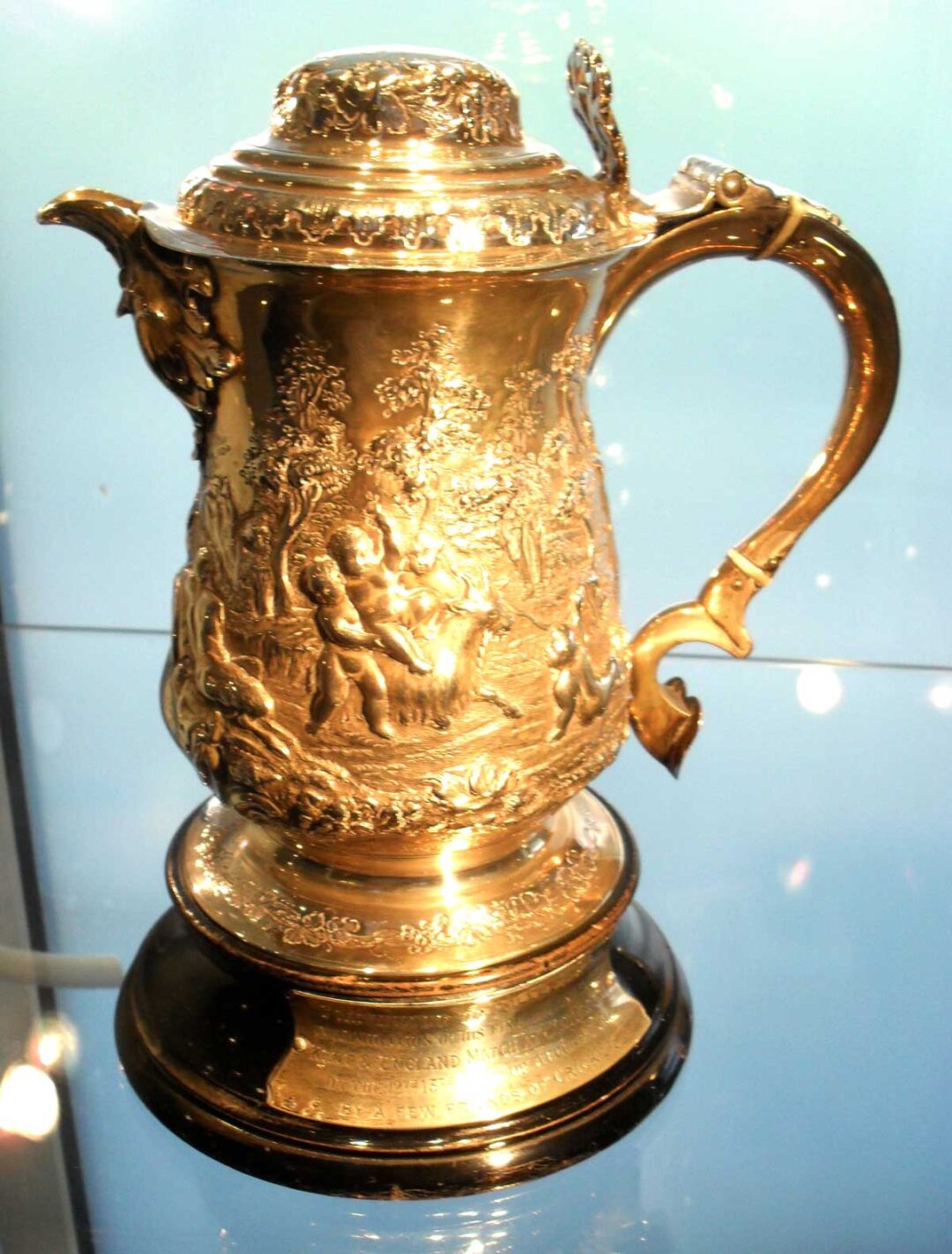The Pilch Collection
The Fuller and William Pilch collection
Fuller Pilch
Fuller Pilch was a key member of the Great Old Kent Eleven during the early to mid-19th century. Recognised as the leading batsman of his era, he consistently led the national batting averages. Utilising his height—standing at 6 feet (1.83 metres)—to advantage at the crease, Pilch was particularly proficient on the off side, especially when playing off the front foot, while also demonstrating strong onside play once set.
Born in Norfolk and originally affiliated with the Bury St Edmunds Club, he accepted a financial offer to relocate to Kent, initially moving to Town Malling before later living in Canterbury. He played for the county from 1836 to 1854 and was the leading run-scorer in 12 of his 19 seasons with the club. His highest score was 98 for Kent against England at Canterbury in 1842.
When his services were not needed by Kent, Pilch was frequently sought after to play for the Players against the Gentlemen, William Clarke’s All-England XI, and as a “Given Man” for various counties, including Hampshire, Surrey, and Sussex.
Fuller Pilch was Kent’s first groundsman at the St Lawrence Ground, Canterbury, when the county move there in 1847. After his cricket career, he umpired many matches at Canterbury, where he lived until his death in May 1870. His tombstone was moved to the St Lawrence Ground in 1978 when St Gregory’s Church was deconsecrated, then removed during redevelopment, but the Club has preserved it with plans for future restoration.
William Pilch
William Pilch, nephew of Fuller, was a capable cricketer who remained somewhat overshadowed by his uncle’s reputation. Relocating to Canterbury in 1844, he lived with Fuller, and together they managed a tailoring and drapery business. William played regularly for Kent from 1840 to 1854, and also represented the Players against the Gentlemen as well as the All-England Eleven.
William and Fuller later managed ‘The Saracen’s Head’ inn in Canterbury. William experienced financial difficulties and was declared bankrupt in 1869 after serving time in Maidstone Gaol for debt-related issues.
